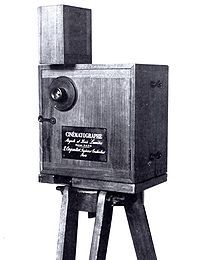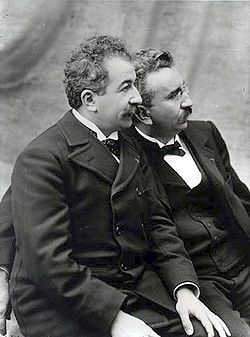A major investigative report by The Washington Post’s Dana Priest shows the CIA has overseen and helped the Colombian government target and assassinate rebel leaders. Forces from Joint Special Operations Command (JSOC) have also provided assistance to the Colombian government, mounting operations to find hostages taken by guerrilla groups. It is all a part of a military assistance program called “Plan Colombia.”
Since 2006, the CIA has contributed “real-time intelligence” to allow Colombian forces to “hunt down” leaders from the Revolutionary Armed Forces of Colombia (FARC) and the National Liberation Army (ELN). They have transformed “less-than-accurate” 500-pound gravity bombs into precision-guided munitions (PGMs) or “smart bombs” by attaching a “$30,000 GPS guidance kit” to the gravity bombs.
…
Lawyers for the White House, including officials in the CIA, Justice Department, Defense Department and State Department, initially wondered if it was legal for the US to target individual FARC leaders with “smart bombs.” Would this be assassination, something prohibited under US law? One lawyer asked, “Could we be accused of engaging in an assassination, even if it is not ourselves doing it?”
The White House’s Office of Legal Counsel decided to employ the same legal basis used to justify targeting and killing alleged members of al Qaeda and its “associated forces.” Lawyers determined, “Killing a FARC leader would not be an assassination because the organization posed an ongoing threat to Colombia. Also, none of the FARC commanders could be expected to surrender.” Plus, FARC was a “threat to US national security” because of Reagan’s finding issued in response to “crack cocaine epidemic” on the streets of America. (Note: Much of this “epidemic” was fueled by the Contras in Nicaragua, which Reagan was backing in a violent struggle against the Sandinistas.)
The US government recognized that Colombia might use the “smart bombs” to go after “perceived political enemies.” From 2006 to 2010, the CIA retained control over the use of “smart bombs” by inserting an encryption key into the bomb. It would be impossible for a bomb to hit its target without the key. If misuse occurred, “the CIA could deny GPS reception for future use.”
The National Security Agency has provided intercepts to troops on the ground or pilots before and during an operation, which are considered a “game changer.”
The use of “smart bombs” to kill rebel leaders in Colombia began before the US began to escalate “targeted killing” operations in Pakistan, Somalia and Yemen. Therefore, the decision to target rebel leaders should not be seen as one directly influenced by what the US was doing to fight known and suspected members of al Qaeda in the Middle East. That is what makes the existence of this program so alarming.
As noted, the legal basis for the CIA’s involvement in the “targeted killing” of Colombian rebel leaders stems from the same dubious criteria used by the US government to argue it can launch drone strikes against “suspected al Qaeda militants” in Pakistan, Somalia or Yemen. It is influenced by the doctrine of preemptive war developed by President George W. Bush’s administration.
No member of the FARC or ELN could reasonably be said to pose any immediate or imminent threat of violent attack against the US. They are fighting the Colombian government, not the US.
…
The government cannot continue to kill FARC members (with full US support) and expect to achieve any meaningful success in negotiations for peace. Of course, the Colombian military establishment may not truly desire peace. They may want to keep on fighting FARC and the peace talks in Havana may be an avenue to further coerce revolutionary groups into submitting to the government’s power.
On Apri 23, 2012, according to Nazih Richani, a professor of Latin American studies at Kean University, more than 100,000 people participated in a “Patriotic March” in Bogota, Colombia, to call for an “end to political violence, oppression and poverty” that has plagued the country.” The march was a result of organization by the National Patriotic Council, which consisted of 4,000 representatives from more than 1,700 grassroots organizations. However, General Alejandro Navas, the head of the Colombian Armed Forces, “accused the Patriotic March of being infiltrated by guerrillas.” Two retired generals also called for a coup because Santos was willing to hold peace talks with the FARC while the strength of a popular movement was increasing.
The bloated Colombian military-including 500,000 soldiers and police-cannot be sustained unless the civil war continues, or unless the United States can find an international role for the behemoth institution,” Richani concluded. “The enemies of peace and social justice in Colombia are many, but their friends are potentially much more numerous. The question is: Can the Patriotic March harness this potential to empower and unite the millions to reach a tipping point for peace?”
…
The Obama administration may insist it is not continuing a policy of assassination that was supposed to have been outlawed by President Gerald Ford, but, in fact, this program continues a dirty war, which America has been fueling for decades through its actions.
It is easy for Americans to look at the record of violence by guerrillas from the FARC and ELN and conclude the Colombian government is justified in bombing its leaders to crush them. It is much harder, especially if one is ignorant of history, to understand that the US has played a role in enabling violent oppression of peaceful resistance. But, history must be consulted and it should be recognized that the government bears responsibility for contributing to conditions that led to the emergence of liberation groups willing to use violence to achieve political objectives.



 Welcome to the
Welcome to the 
 On this day in 1895,
On this day in 1895, 
Recent Comments